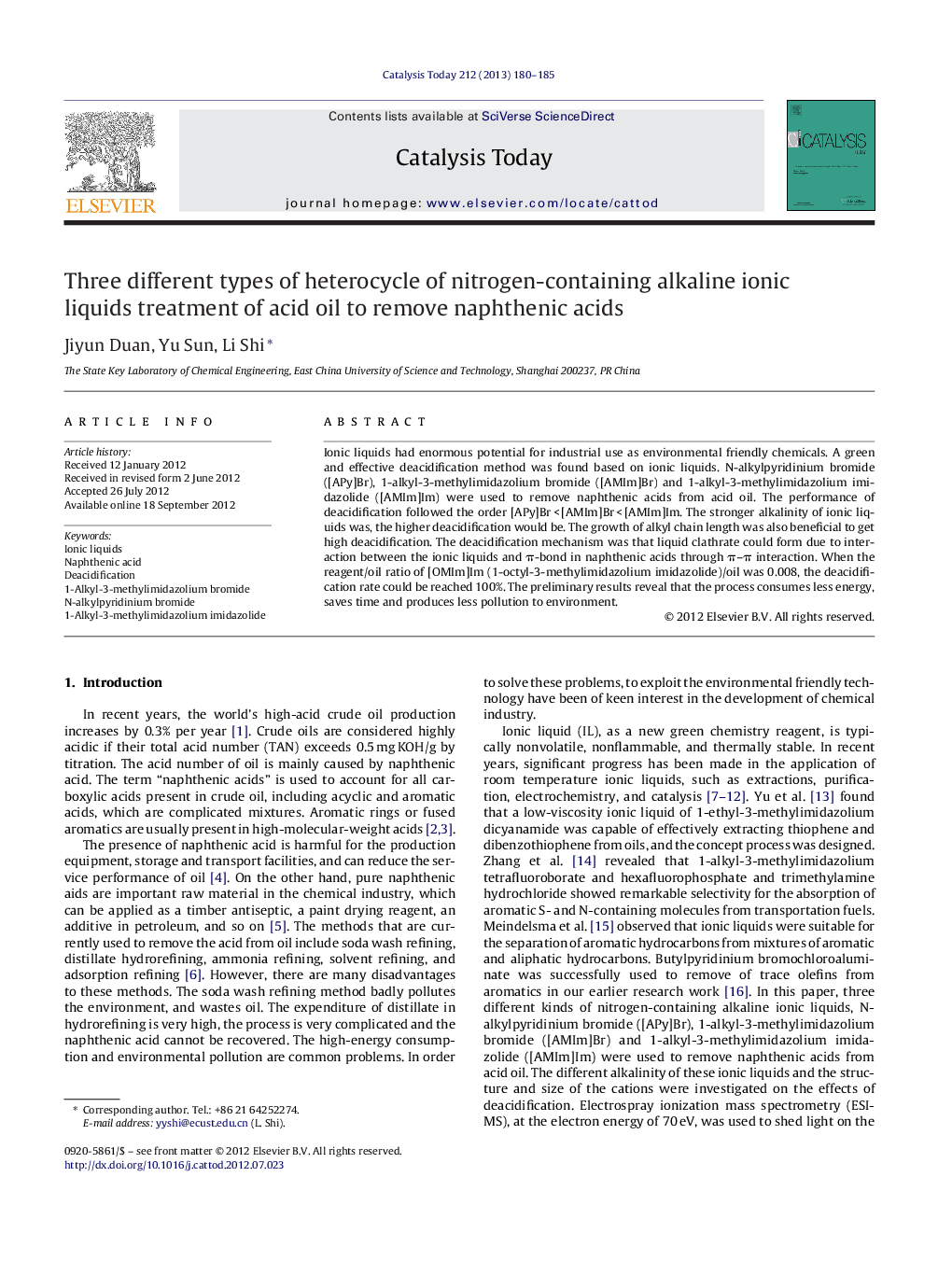| Article ID | Journal | Published Year | Pages | File Type |
|---|---|---|---|---|
| 54824 | Catalysis Today | 2013 | 6 Pages |
Ionic liquids had enormous potential for industrial use as environmental friendly chemicals. A green and effective deacidification method was found based on ionic liquids. N-alkylpyridinium bromide ([APy]Br), 1-alkyl-3-methylimidazolium bromide ([AMIm]Br) and 1-alkyl-3-methylimidazolium imidazolide ([AMIm]Im) were used to remove naphthenic acids from acid oil. The performance of deacidification followed the order [APy]Br < [AMIm]Br < [AMIm]Im. The stronger alkalinity of ionic liquids was, the higher deacidification would be. The growth of alkyl chain length was also beneficial to get high deacidification. The deacidification mechanism was that liquid clathrate could form due to interaction between the ionic liquids and π-bond in naphthenic acids through π–π interaction. When the reagent/oil ratio of [OMIm]Im (1-octyl-3-methylimidazolium imidazolide)/oil was 0.008, the deacidification rate could be reached 100%. The preliminary results reveal that the process consumes less energy, saves time and produces less pollution to environment.
Graphical abstractFigure optionsDownload full-size imageDownload high-quality image (113 K)Download as PowerPoint slideHighlights► The stronger alkalinity of ionic liquids was, the higher deacidification would be. ► The growth of alkyl chain length was beneficial to get high deacidification. ► The optimal reaction temperature was 323 K. ► [OMIm]Im was the optimized ionic liquid to remove naphthenic acid. ► Due to π–π interaction, naphthenic acid could be removed effectively by ILs.
